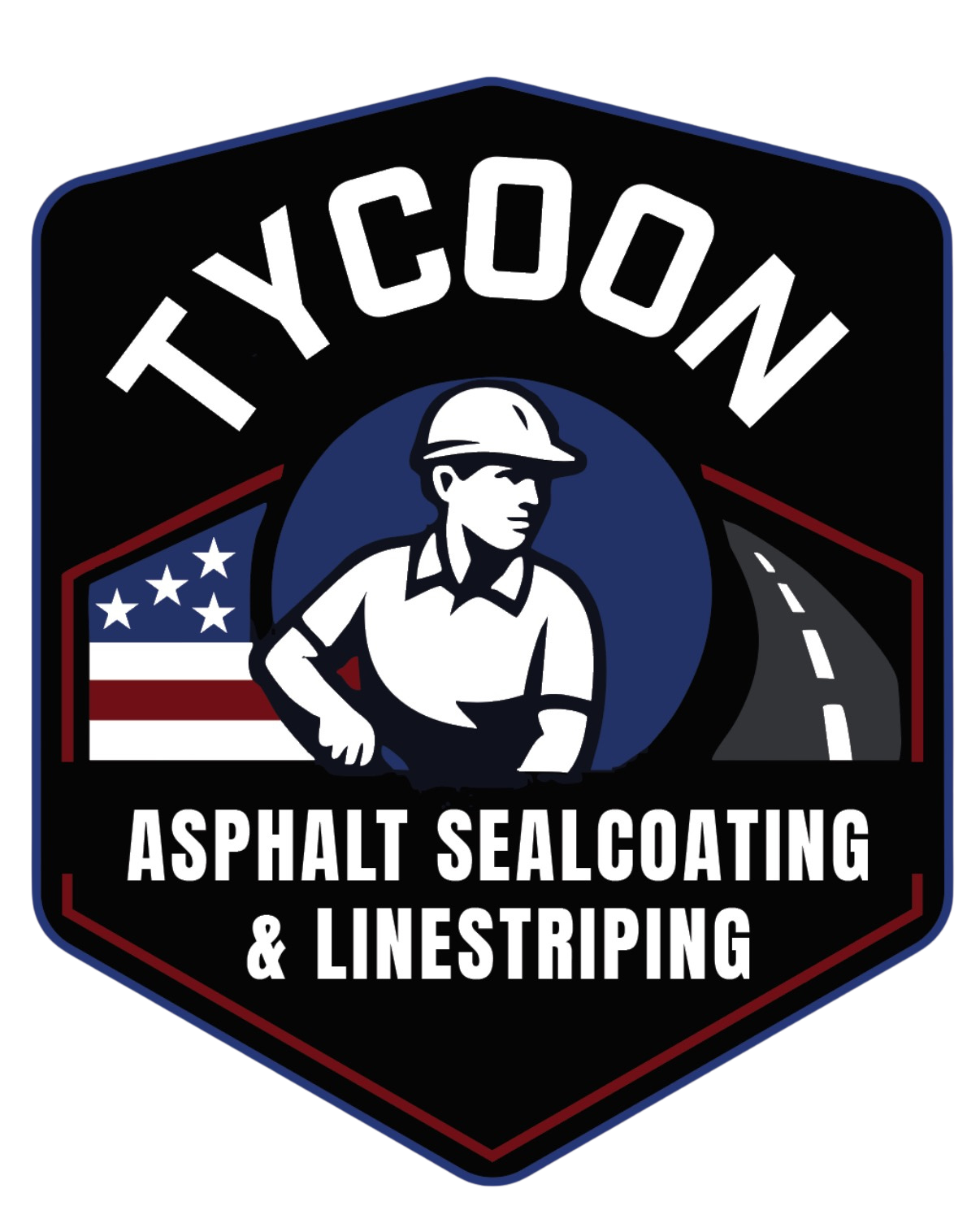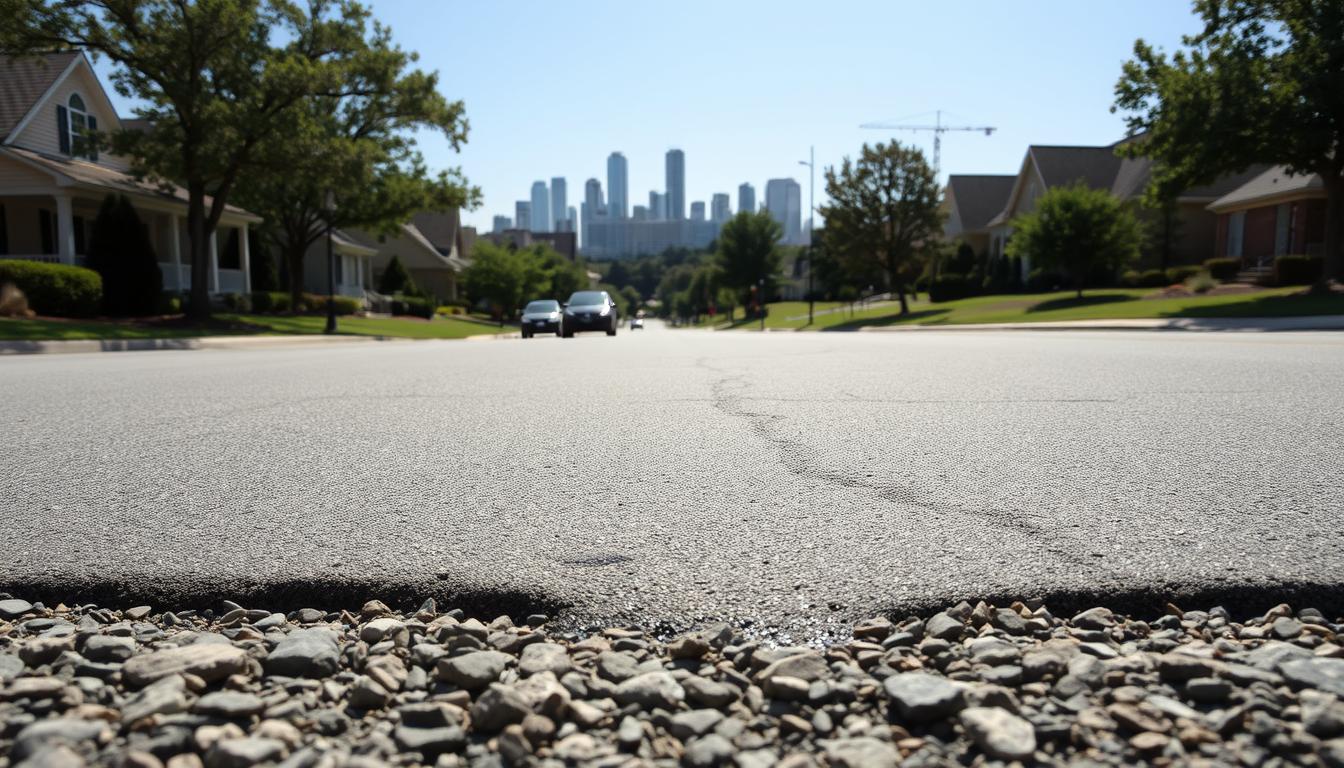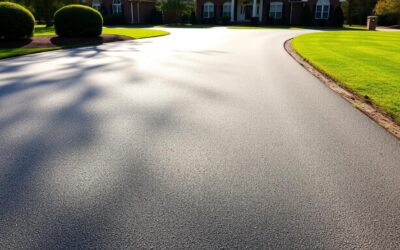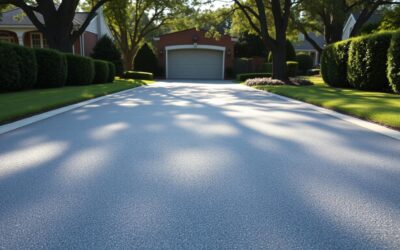We welcome you to a clear, hands-on guide that walks us through cleaning a driveway at home or a small business lot. Our goal is to protect asphalt and limit harm while we lift common spots efficiently.
In this blog we explain what makes Charlotte driveways unique, from summer storms to hot, sunny days that can bake contaminants into pavement. Then we show step-by-step removal and safe triage for fresh drips and set-in marks.
We preview the tools, materials, and simple safety steps to stage the area once and finish the job right. We also highlight common mistakes and when pro-level help or specialty solutions are worth the call.
Read on to learn quick cleaning tips, longer fixes, and how a final rinse and optional seal can extend surface life and keep curb appeal high.
Why oil stains damage asphalt surfaces in Charlotte’s climate
Heat and vehicle traffic make simple spills turn into long-term pavement problems if we don’t act fast. When oil stains sit on a hot paving layer, the binder softens and the aggregate loosens. That change weakens the asphalt surface beneath tires.
Grease and petroleum act like solvents on bitumen. They dissolve the binder and create softened patches that can rut or flake under repeated loads. Even a small stain will grow as cars grind the area and push contamination into pores.
Rain can spread a spill across the road and into walkways, driving the stain deeper and making later cleanup harder. Over time a neglected spot can form a depression that holds water and speeds freeze-thaw damage.
We never recommend using gasoline or paint thinner. Those products strip binders and leave a sandy, tracked mess that often needs full replacement. Understanding the chemistry helps us pick safer cleaners and act quickly so a single stain does not become a recurring maintenance problem.
Safety-first prep and the gear we use for a clean job
Before we touch a single drop, we set up a safe zone and gather the right gear. That protects people, pets, and nearby plants while we work on the affected area.
We start with personal safety: gloves, eye protection, and non-slip footwear. Then we block access with cones or tape so no one walks into the work zone mid-task.
What to avoid
Do not use gasoline, paint thinner, or other petroleum solvents on pavement. These products dissolve binders in the surface and can force costly repairs to the asphalt.
Our equipment checklist
We bring absorbent granules or pads, a stiff broom, buckets, and a non-petroleum degreaser. We also have hot water on hand and a pressure washer with a fan-tip nozzle.
Keep the washer wand moving and moderate pressure to prevent etching. The right tools help the cleaner lift the mark so we can agitate and wipe it away efficiently.
Site prep
Before wet work, we dry-sweep loose grit and lay absorbent socks around the perimeter. We shield beds and grass with plastic to avoid splash damage.
Finally, we always test a small, inconspicuous spot to confirm product compatibility. That quick check saves time and keeps results even across the surface.
How we remove oil stains asphalt charlotte: proven methods
Our method blends quick action and gentle chemistry to tackle common driveway marks. We start by matching the response to how fresh or set the spot is. This keeps the surface safe and cuts the need for heavy repair.
Fresh spill control
For a new drip, we cover the area with absorbent granules and press lightly so the liquid lifts into the material.
We repeat until no wet sheen shows, then sweep up and discard used absorbent.
Degreaser method
We apply a compatible degreaser generously and let it dwell for several minutes so it breaks the bond with the pavement.
Agitation with a stiff broom moves the lifted residue toward the center so it can be wiped or swept away with a rag or cloth.
Hot-water pressure washing
When available, hot water improves emulsification during washing. We use a fan nozzle, keep the wand steady, and control water pressure to avoid scarring the surface.
Stubborn stain steps
For set-in marks we repeat the degreaser-and-scrub cycle, adding dwell time between passes. We run extra cycles rather than raising pressure.
Finally, a wide rinse carries residue away and restores the look while protecting the pavement.
Choosing the right solutions without harming your asphalt
We choose cleaners that target hydrocarbons but do not strip the binder that holds paving together. Using the wrong solvent can soften the surface and lead to costly repair, so we favor pavement-safe options that lift residue without attacking the asphalt.
Local pros often recommend dedicated degreasers and brand-name products like BT200 and SW1000 for persistent marks. For budget-conscious jobs, Asphalt Kingdom’s Universal Degreaser is a practical solution that works on most residential and small business surfaces.
When to escalate: heat-assisted removal and replacement
If repeated cleaning cycles fail and the binder is visibly degraded, we consider heat-assisted removal. Technicians warm the patch, scoop out softened material, and replace it with new cold or hot mix.
Heat-and-replace runs roughly $100 per stain. We prefer hot asphalt when durability matters because it bonds and wears better. Before committing, we test one last cleaning cycle with longer dwell and firm agitation to confirm a plateau in results.
Finishing the job: rinse, dry time, and sealing for longer-lasting results
A final wash and correct cure time are the steps that turn good cleaning into lasting protection. After we lift the spot with a degreaser, we rinse thoroughly so residues do not wick back as the surface dries.
Next, we wash the entire driveway to even out appearance and give the sealer a uniform surface to bond to. Washing the whole area also helps us spot any remaining discoloration or slick patches.
What we check before sealing
We let the pavement dry fully; sealing over damp areas traps moisture and weakens adhesion. We check for sheen or slick spots and, if needed, spot-treat and rinse again until the finish looks balanced.
During the final wash we manage pressure and water so we do not lift fines or change texture. A compatible sealer is applied in steady, overlapping passes for consistent coverage.
Finally, we keep traffic off for the recommended cure time. That clear window protects the work and helps the seal extend how long the driveway stays clean and resistant to future stains.
Keep stains away: proactive maintenance for driveways and parking areas
We focus on simple habits that keep a driveway and parking area tidy and long-lasting. Small, regular checks stop fresh marks from sinking in. That saves time and money down the road.
Charlotte-friendly habits: regular inspections, quick cleanups, and scheduled sealing
We recommend monthly inspections for driveways and parking spots so we can remove oil early, before it penetrates. After storms we do a quick walk-through; pooled water can hide new spots and spread contamination.
Keep a compact spill kit nearby with absorbents, a broom, and a pavement-safe cleaner. Train family or staff where to park and how to report leaks. For small businesses we set a quarterly plan that balances budget, safety, and curb appeal.
Seasonal maintenance includes a light wash and a check of high-traffic lanes where oil stains tend to form. We schedule sealing at manufacturer intervals to slow absorption and make future cleanups faster and easier.
Document problem areas with photos so patterns are clear. Our guide and blog tips help you track habits like placing drip pans under known leakers. With routine care, you’ll spend less time fighting marks and more time enjoying a neat, well-kept property.
Ready for spotless asphalt today in Charlotte? Let’s get it done
Let’s turn a tired patch into a clean surface using careful pressure washing and a pavement-safe degreaser.
We’ll walk you through a quick setup in minutes: gather tools, block access, and stage hoses, tips, and absorbent parts so water and lifted residue stay in the work area.
For routine washing, our game plan uses a fan-tip spray, steady water pressure, and hot water when available to speed emulsification without overdoing pressure. Match nozzles to the paving and dial flow so the washer lifts contamination without harming the binder.
For heavy, set-in marks we repeat cycles and, if cleaning tops out, consider heat-assisted removal and patching (pro costs run about $100 per stain). Reach out and we’ll help pick the right solution for a home driveway or busy business entrance.




0 Comments